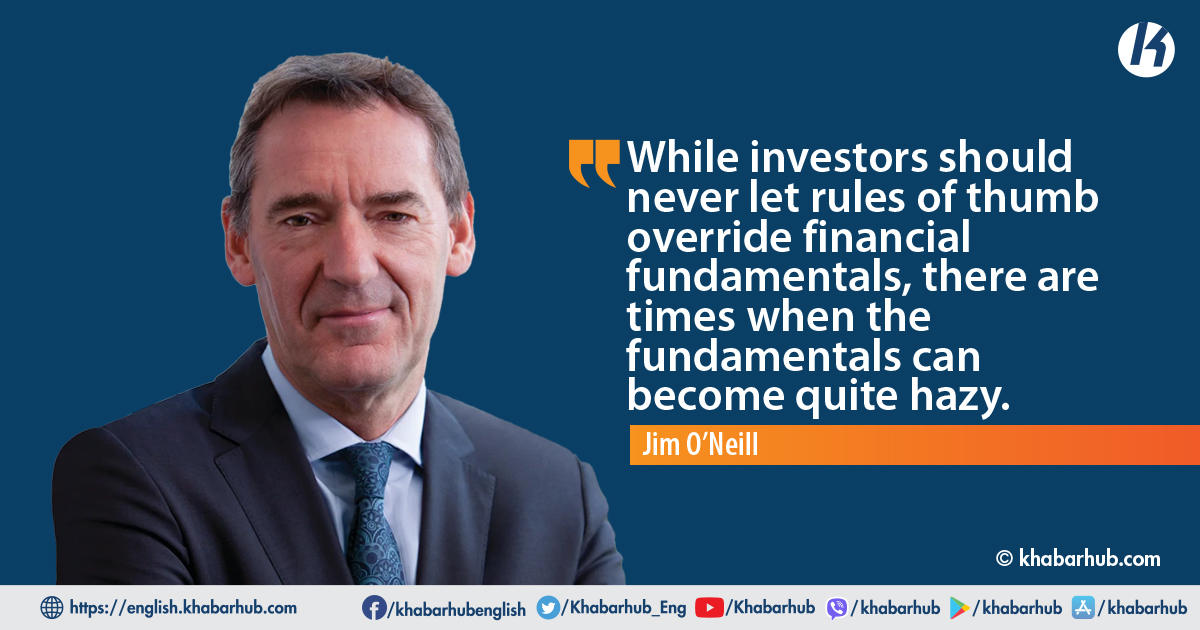During my lengthy career in finance, I picked up several market heuristics that have generally proven more useful than not.
Every January, for example, I remember the “five-day rule,” which holds that if the S&P 500’s accumulated performance is positive over the first five days of the new year, there is around an 80% probability that the overall market will end the year higher than where it started.
So far, this analytical trick has worked pretty well, despite all of the world’s uncertainties.
With springtime comes a second rule of thumb: “Sell in May and go away” (and, for us Brits, “come back on St. Leger Day” – September 15).
Though less statistically precise, this one has also often proven useful. If you are an investor – especially one who has had a good first four months of 2023 – you might want to bank your gains and sit on the sidelines until the fall, because there is a decent chance that markets will have declined in the intervening months.
Of course, there is no objective reason why either of these rules holds true. After all, equity markets historically tend to rally more than they fall, and they also generally outperform other financial markets – not to mention cash or fixed income – over time.
The interest-rate outlook remains the elephant in the room. Right now, markets seem pretty convinced that most central banks are either “done” raising rates or close to it, and some are even anticipating rate cuts before the end of the year.
Obviously, one should never let a rule of thumb override the fundamentals. Yet there are times when the fundamentals can become quite hazy, and there is good reason to think that we are in such a period right now.
Consider the latest round of monthly purchasing managers’ indices in globally important countries.
Not only do they show continuing weakness in manufacturing; they also indicate that the global economy may technically be experiencing a manufacturing recession.
At the same time, services indices remain strong and are even accelerating in some cases.
While some services-reliant economies (such as the United Kingdom) can cope relatively well with manufacturing weakness, it is very unlikely that these two indices would move in opposite directions for long.
Service industries either will ultimately stimulate other forms of activity, or they will be dragged down by their own dependencies on other industries.
As usual, China offers an important window onto the global economy. Following the end of its zero-COVID policy late last year, the Chinese economy had a strong start to 2023, and forthcoming data will almost certainly show a robust year-on-year acceleration for many components of output and demand in April.
But there are signs that the recovery’s momentum may be waning, and that various structural challenges are holding back activity.
Moreover, inflation has not merely subsided, but has fallen so far as to raise concerns about deflation.
Nor is China alone. Other important Asian economies, such as Japan, are also experiencing tame inflation, in stark contrast to the surging price levels seen in Western economies over the past year and a half.
Looking beyond Asia, I have been confounded by the inflation indicators that I tend to rely on most.
For example, recent producer-price indices in the United States, along with some components of consumer prices, have shown clear signs of deceleration; and, as I have mentioned before, many global commodity prices are now much lower than they were a year ago.
Sooner or later, these developments should feed into many producer and consumer prices.
But the latest “core” inflation figures (excluding volatile food and energy prices) in the US, the UK, and the European Union have complicated the picture by revealing continuing strength in price pressures.
On the other hand, if current market expectations are forced to change, new rallies in equity markets will be harder to sustain, barring a significant acceleration in earnings.
And the University of Michigan’s closely watched five-year inflation expectations survey recently showed a notable rise to 3.2%, after having fallen to 2.9% in recent months.
Central bankers doubtless remain troubled by the situation. One hopes the most recent figures are just a one-off exception.
But if they are not, the Federal Reserve Board will confront a very problematic situation.
The interest-rate outlook remains the elephant in the room. Right now, markets seem pretty convinced that most central banks are either “done” raising rates or close to it, and some are even anticipating rate cuts before the end of the year.
That could well happen; but first, the inflation data would need to improve quite a bit.
On the other hand, if current market expectations are forced to change, new rallies in equity markets will be harder to sustain, barring a significant acceleration in earnings.
Where does that leave us before the summer? On balance, I suspect that the inflation picture will continue to improve gradually.
But if the Michigan survey’s findings about inflation expectations aren’t reversed, equity investors will have good reason to worry.
(Jim O’Neill, a former chairman of Goldman Sachs Asset Management and a former UK treasury minister, is a member of the Pan-European Commission on Health and Sustainable Development)
Copyright: Project Syndicate









Comment